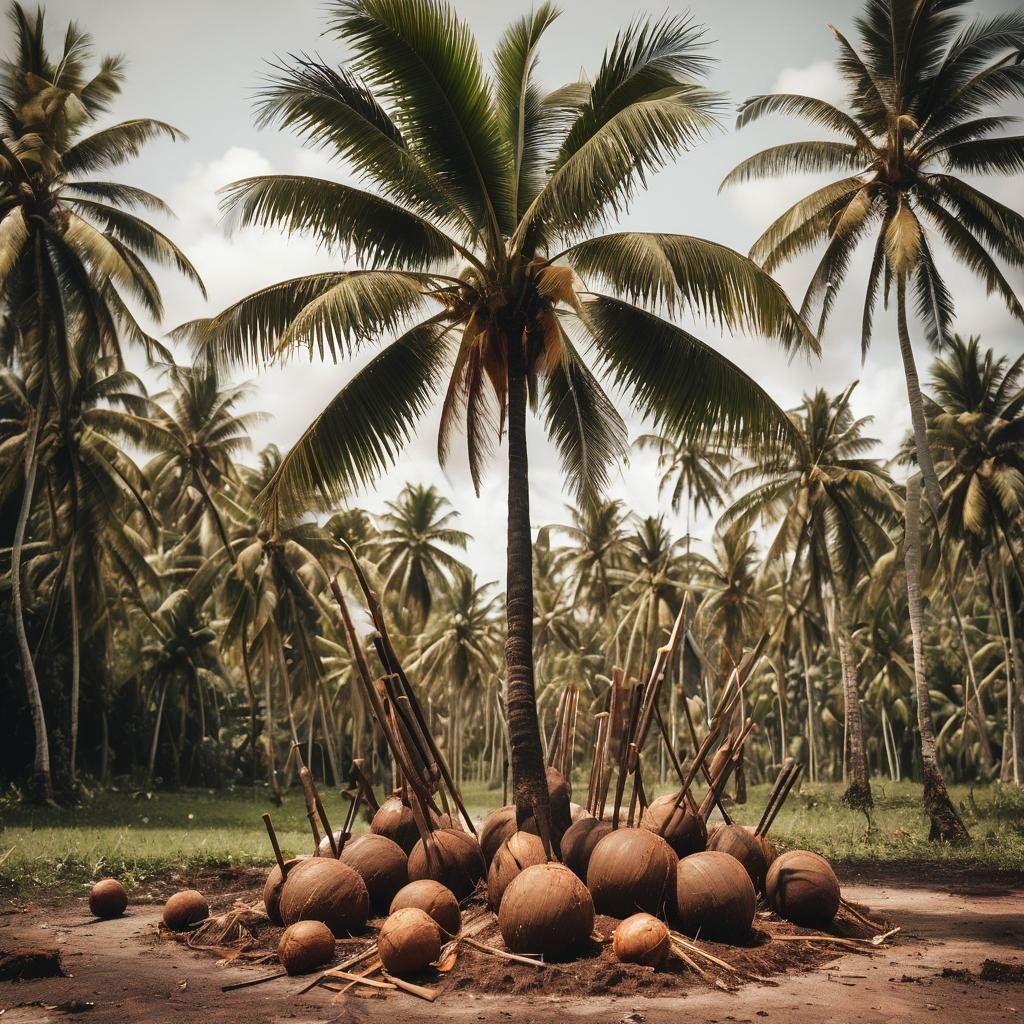Are Black Cultures Unsung Champions of Circular Sustainability?
The term sustainability can be a complex term as it can mean different things to everyone. For instance, some people might focus on the environment, others social impact. So, this got us reflecting on how Black people and Black cultures have traditionally incorporated sustainable practices into everyday living. The fact is, sustainability has always been at the heart of Black culture, especially in the form of circular sustainability. We’re going to showcase some of the most common traditional practices, range of resourcefulness and innovative champions scaling traditions up.
How Black people use nature to create multifunctional items
Throughout history Black people have used natural resources to not just fuel and hydrate themselves, but to also craft for ingenious multifunctional purposes. Some of the best examples of this are with the use of palm leaves and fruits - coconuts and calabash. Both fruits are widely used throughout Africa and the Caribbean as “tableware” (serving bowls, jugs, etc), storage, decoratively and also to make a variety of musical instruments, such as drums, rattles, and string instruments.
The sturdiness of the coconut leaves are a great resource to make thatched roofs, weaving baskets, and brooms. And the fibrous husk surrounding the shell are repurposed to make ropes, mats, brushes, and even clothing. In Kenya, the Kamba people are especially known for their beautiful and intricately decorated calabashes, which can be seen as accent pieces in homes. Palm leaves are beautifully woven into baskets, mats, hats, and even roofing materials. Some cultures also use them for plates and serving dishes. The beauty of these natural resources lies in their versatility, the whole plant is put to work
Recycling and Upcycling to drive circular sustainability
Repairing, repurposing and remanufacturing can frequently be overlooked systems of the circular sustainability, but one could argue this could be one of the easiest consumer behaviours to help reduce waste. Africa, in particular, has a rich tradition of resourcefulness such as the repair of electronics, automobiles and home appliances. Increasing the lifespan of essentials and reducing e-waste.
Africa and the Caribbean currently has a surge of entrepreneurs who are creatively giving new life to waste and transforming it into a valuable resource, by developing innovative ways to upcycle and repair products such as chairs made from upcycled tyres. Here are just a few entrepreneurs and companies doing just that:
Nzambi Matee from Nairobi, Kenya
Is turning waste into construction material that is anywhere from two and seven times stronger than concrete, half the weight, and as much as 15 percent cheaper. It took her several years to perfect a prototype as the machinery required was custom built and sourced from spare industrial parts. By 2019, production was steadily underway. The shredded plastic is mixed with sand and subjected to extreme heat, producing a sludge that is moulded into different sized blocks.
Ghislain Irakoze Rwanda
Ghislain Irakoze, CEO of Wastezon in a materials traceability platform is helping Rwandans turn their unrepairables into cash. Household consumers are able to connect to local recyclers to reduce e-waste and unlock value in unusable items.
Legena Henry from Barbados
Rum waste has become a viable renewable energy source, thanks to the innovative thinking of engineers in Barbados. Rum and Sargassum is the brainchild of Legena Henry, on her quest to support Barbados becoming 100% Fossil Fuel Free by 2030. Rum and Sargassum is using three key waste materials: Sargassum seaweed, rum distillery wastewater, and manure from the Barbados blackbelly sheep to produce sustainable energy. This is a product that is not just reusing multiple waste products but also solves other major environmental problems; the reuse of sargassum prevents it from polluting the beach.
As you might expect, fashion is a key industry where recycling and upcycling can be seen in action in the most innovative of ways. We are loving the creations! Sole Rebels in Ethiopia makes shoes out of recycled tyres, indigenous plant fibres, and local leather. Nigeria’s Planet 3R weaves discarded plastic water sachets into bags, homewares, and accessories. Nairobi-based Rummage Studio sources 95% of the core materials in its bags and accessories from the largest second hand textile market in East Africa, Gikomba.
Samata Pattinson, sustainability icon
We could not talk about circular sustainability without mentioning Samata Pattinson, a leading pioneer and entrepreneur in fashion and cultural sustainability. Samata Pattinson is CEO of BLACK PEARL a pioneering cultural sustainability organisation, redefining the landscape of sustainability and culture. They work across the realms of design, fashion, music, entertainment, and education. Pattinson was CEO of the Red Carpet Green Dress (RCGD) which has driven sustainable fashion to the Oscars where she wrote the first sustainable fashion guide for the 95th Academy Awards.
Samata Pattinson
Circular sustainability offers a holistic approach to addressing environmental, social, and economic challenges, making it a desirable model for promoting sustainable development. And Black people will continue to lead in ways to think and practise circular sustainability.




